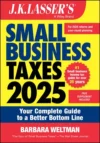How Excess Deductions from Estates and Non-Grantor Trusts Impact Beneficiaries
When estate and non-grantor trusts have deductions that exceed their income, these excess deductions are passed through to beneficiaries. However, the Tax Cuts and Jobs Act bars individuals from claiming miscellaneous itemized deductions subject to the 2%-of-adjusted-gross-income limit from 2018 through 2025. So how do beneficiaries who receive these pass-through deductions handle them?
According to proposed regulations (https://www.federalregister.gov/documents/2020/05/11/2020-09801/effect-of-section-67g-on-trusts-and-estates), executors and trustees have the responsibility to tell beneficiaries whether the deductions passed through to them are adjustments to gross income, miscellaneous itemized deductions subject to the 2% floor, or miscellaneous itemized deductions not subject to the 2% floor. The tax character of the deduction is determined at the estate or trust level and preserved when passed through to beneficiaries.
For example, the proposed regulations make it clear that the following passed through deductions are adjustments to gross income (i.e., deductible by beneficiaries even if they take the standard deduction):
- Costs paid or incurred in connection with the administration of the estate or trust which would not have been incurred otherwise.
- Deductions concerning the personal exemption of an estate or non-grantor trust.
- Deductions for trusts distributing current income.
- Deductions for trusts accumulating income.
Inclusion amount for leased cars
Based on an IRS table, an amount that reduces a business deduction taken for payments on an auto leased for a minimum of 30 days.



